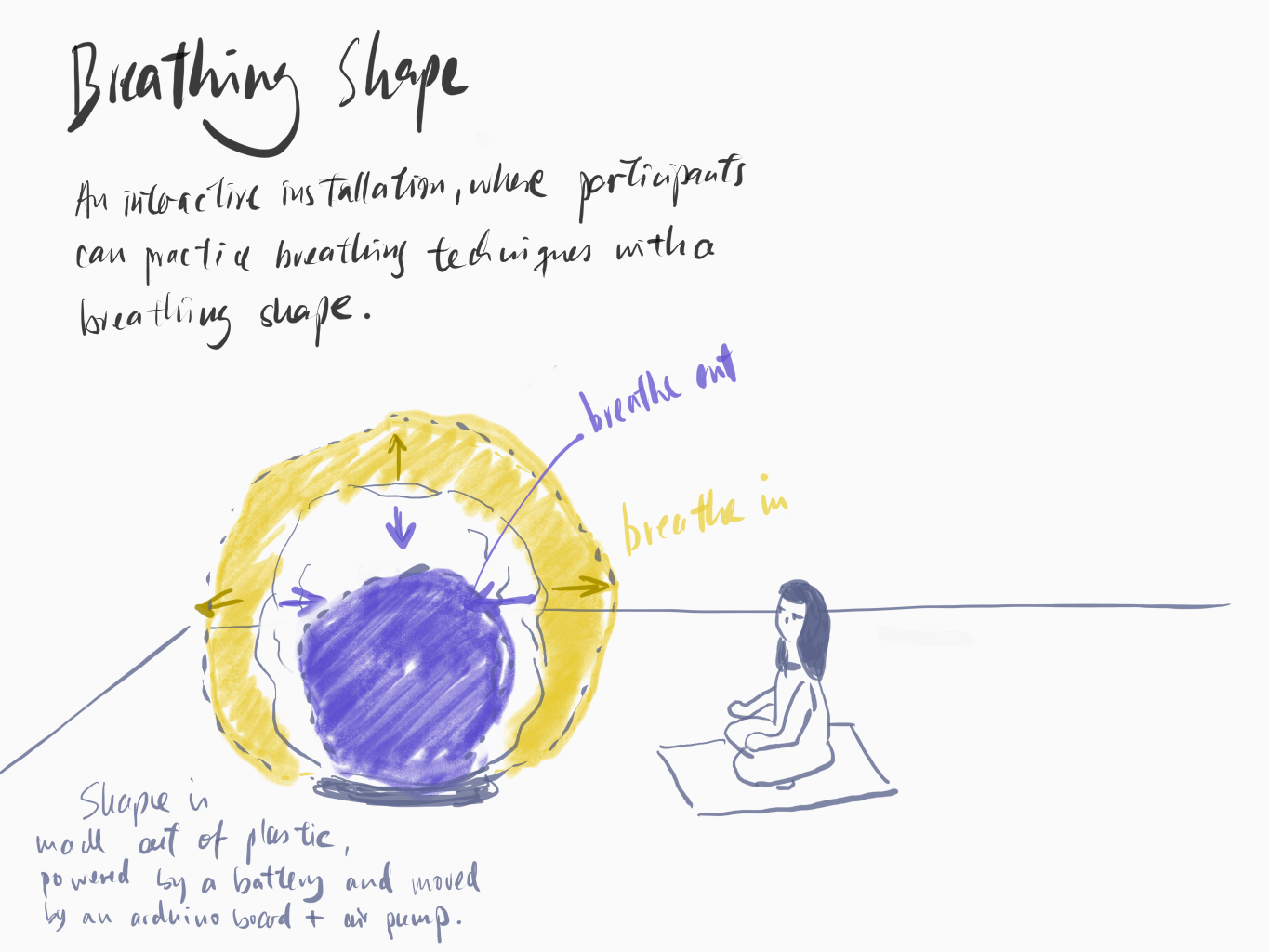A breathing Perlin Noise
This algorithm is based on the sacalled Perlin Noise. It is a noise
function based on pseudorandom gradient values at grid points. The
distribution of the variations is minimal and makes the visual
output appear "more organic", as transitions move smoother than with
a simple random factor.
The Perlin Noise function was developed by
Ken Perlin
in 1983 as a result of his frustration with the "machine-like" look
of computer-genarated imagery (CGI) at the time.
My approach was to map the Perlin Noise distribution to the change
of an ellipse diameter, simulating a shape breathing slightly
irratic. For the practical applicagtion scenario I imagined a
physical form in real life in form of a meditation guide or
breathing instructor at a lung healing facility. In this case one
would rather use the sinus/cosinus function to make the breathing
even more regularly.

You can check out the code on the following GitHub repository.